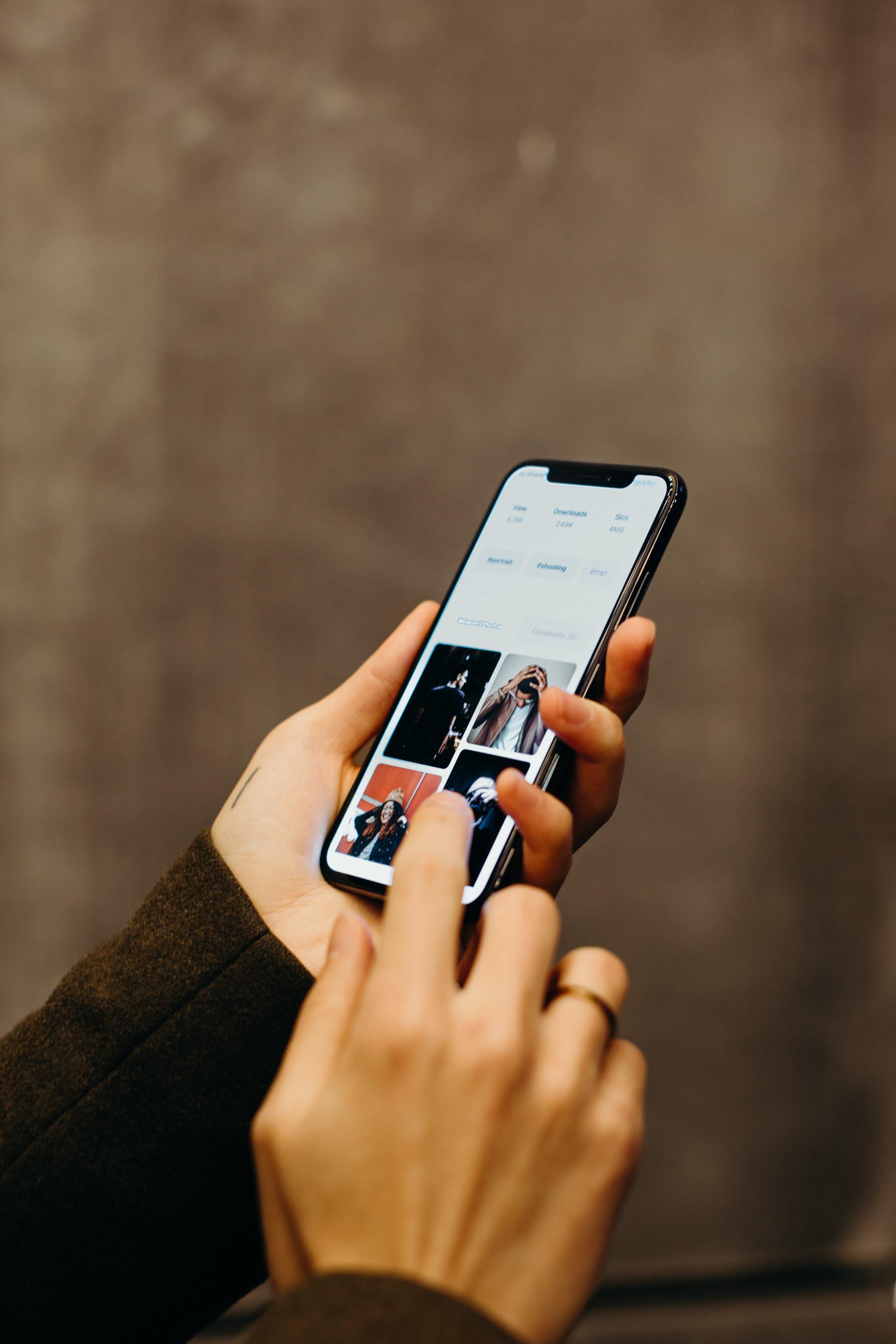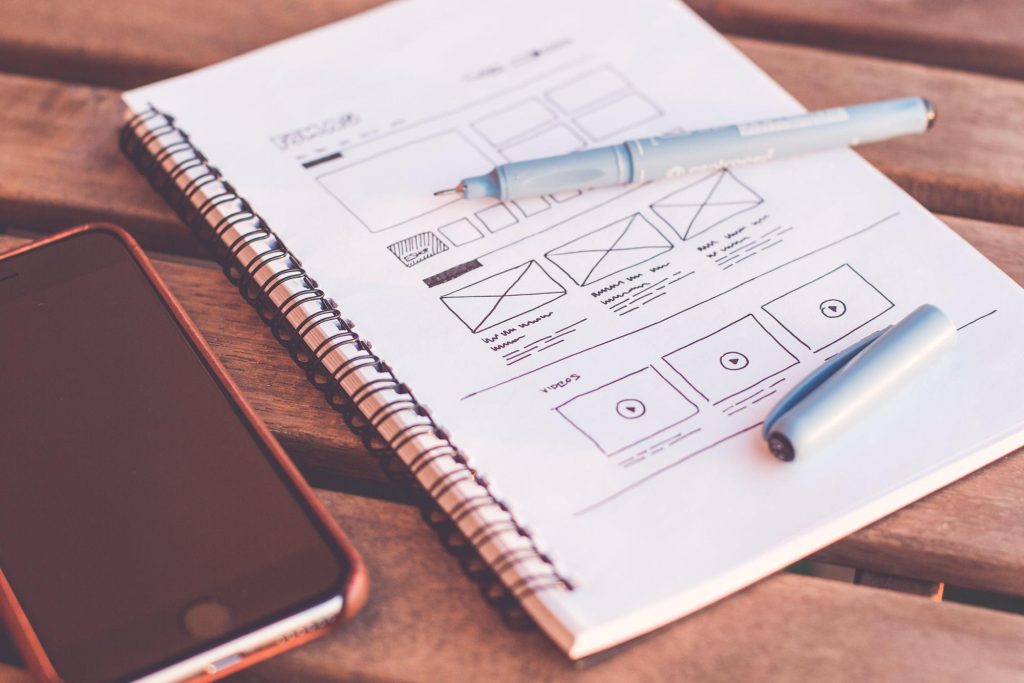Welcome to the world of digital craftsmanship where the art of creating seamless user experiences reigns supreme. In this introductory post, we’ll be delving into the realm of UX Design, a field that has become indispensable in the development of user-friendly products and services. Whether you’re a seasoned designer, an aspiring creator, or simply curious about the intricacies of user experience, this guide will provide you with a foundational understanding of UX Design.
Join us as we explore the principles, processes, and practices that make up this fascinating discipline, ensuring that every interaction between user and product is intuitive, engaging, and effective.
The fundamentals of ux design: understanding user experience

UX design is not just a buzzword reverberating through the corridors of tech companies and creative agencies; it’s the bedrock of a magnificent user interface that ensnares the senses, commands attention, and can even make grown adults feel a childlike wonder at the slickness of a well-executed app. At its core, User Experience (UX) Design is the alchemy that transforms the mundane into the magical, ensuring that a product doesn’t just work, but delights in its working.
To understand the fundamentals of UX design, one must first grasp that it is an empathetic process. It begins with stepping into the shoes of the user—after all, it’s user experience we’re talking about. A UX designer must become a sherlockian detective of sorts, studying users with acute perception to deduce their needs, frustrations, and desires.
The outcome? A product that feels like a veritable mind reader. Consider the intuitive swipe of a dating app, or the seamless way you share a post on social media.
These interactions didn’t happen by chance; they are the fruits of meticulous UX design, with countless hours spent in understanding how users prefer to navigate their digital world. Digging deeper, UX design is a symphony of components including but not limited to, usability, accessibility, interaction design, and information architecture.
The beauty of this field lies in its attention to the holistic experience. It’s not enough that the app loads quickly; how does the loading animation make the user feel?
Is it a progress bar that breeds impatience, or a playful loop that captivates while they wait? It’s a ballet between form and function where each element—from the color palette to the shape of a button—is chosen for its ability to engage and facilitate a seamless journey through the product. The magic of UX design is that when it’s done right, it’s invisible.
Users don’t think about the design because they’re too busy enjoying the experience. And in that lies the true prowess of a UX designer: the power to create an effortlessly enjoyable user journey that feels like it was tailored just for them. As technology marches on and users become ever more discerning, the wizardry of UX design becomes not just desirable, but utterly indispensable.
The evolution of ux design: from past to present

### The Evolution of UX Design: From Past to PresentUX design, a herald of modern digital craftsmanship, has blossomed from humble beginnings into the omnipresent force that shapes how we interact with our devices, services, and each other. Its journey is one of constant metamorphosis, responding to the ever-shifting ways we engage with technology. Cast your mind back to a time before pixels and touchscreens.
In these analog days, UX design wasn’t even a term, yet the principles were there. User experience depended on the tactile response of a typewriter key or the heft of a rotary phone.
Innovators of the time, such as Henry Dreyfuss – whose work on the Model 500 telephone is a classic case study in functional design – were unwitting pioneers in the field of UX. They sculpted the user’s journey with a product, focusing on efficiency, usability, and satisfaction.
It was a nascent form of UX, where the user’s interaction with a product was considered, if not scientifically, then with intention. Fast forward to the era of screen-based interfaces, and the landscape of UX design explodes with possibilities. Computers in the 1980s introduced us to the graphical user interface (GUI), a revolutionary leap that made computing accessible to the masses.
Icons, windows, and pointers translated the esoteric of computer code into a visual vocabulary we could all understand. Here lies the true genesis of modern UX, where designers like Don Norman, who first coined the term “user experience”, began to intricately map the digital journeys of users. Today, UX design stands as a titan, a key player in the success of nearly every app, website, and interactive product.
Each tap, swipe, and click is an ode to the discipline that anticipates and molds the user’s path with a finesse that is nearly invisible when perfectly executed. It’s a testament to its own evolution – from the physical to the digital, from the overlooked to the indispensible.
As we sail into the future with virtual reality, voice interfaces, and AI-propelled interactions, the canvas of UX design continuously expands. And so, UX design remains a fluid art, both informed by its rich past and eagerly molding its future.
Key principles and elements of effective ux design

**Key Principles and Elements of Effective UX Design**UX design, which stands for User Experience design, is akin to setting the stage for a standing ovation in a play where the protagonist is the user—and every interaction counts towards the grand finale. At the heart of this discipline lies a fundamental question: How does one create products that resonate with the user on a profound level?
Let’s unravel the tapestry that makes up the core principles and elements of effective UX design. Foremost among these principles is **usability**. A product can flaunt the most avant-garde aesthetics, but if navigating it feels akin to deciphering an enigma code, then its design sails without a compass.
Say, for example, a mobile app’s menu button is hidden in an unexpected corner, disrupting the general flow that hundreds of other apps have taught users to expect. This misstep can cause frustration and breed a distaste for the product.
Effective UX design ensures that familiarity and intuition steer the wheel of functionality, allowing users to move through a digital space as comfortably as a fish swims through water. The second key element orbits around **emotional resonance**, which is the silent conversation between the product and the user. If you’ve employed a fitness app that cheers you on with every milestone reached, you’ve experienced this bond.
The app taps into the user’s aspirations and acknowledges progress, forming an encouraging and motivational dialogue. This emotional connective tissue woven into the UX can transform a mundane task into a meaningful journey, enhancing overall engagement with the product. **Accessibility** also reins supreme in the realm of UX.
Inclusivity isn’t just an altruistic nod in design; it’s the hallmark of a product built for the masses. Consider captioning features in videos or the use of voice commands for hands-free operation—these are not just convenient extras but vital features that invite a broader audience to the table.
By acknowledging the spectrum of human abilities, effective UX design forms an all-encompassing embrace that acknowledges every user’s right to technology. Such principles and elements are not just piecemeal patches sewn haphazardly onto the fabric of design. They dictate the very ethos that UX designers must adopt to create experiences that, like a well-loved novel, invite users back again and again. In a world increasingly mediated by screens, understanding and implementing these pillars of UX design could very well spell the difference between a product that shines briefly and one that becomes an enduring part of the user’s digital odyssey.
The ux design process: from research to prototype
The UX Design Process: From Research to PrototypeEmbarking on the journey of UX design is akin to crafting a narrative where the user is the hero and their seamless interaction with your product is the story you’re setting out to perfect. At its core, UX design is the discipline of creating an optimal experience for users when interacting with digital interfaces. It’s about understanding the needs, behaviors, and emotions of your audience to craft a product that feels intuitive, efficient, and enjoyable.
In the foundational stage of UX research, the narrative begins as designers turn into investigators, delving into the minds of users. This phase is critical, as it allows designers to empathetically understand the people who will ultimately use the product.
Research methods include user interviews, surveys, and usability testing to gather authentic insights. For example, by observing users interact with an existing product or a competitor’s offering, designers can identify pain points, needs, and opportunities for innovation.
This data-driven empathy sets the stage for all subsequent design decisions. Transitioning from research, the design ideation phase is where creativity blooms. Designers brainstorm concepts and solutions, often representing them through personas, scenarios, and user journey maps.
These tools help ensure that the design remains anchored in user-centricity throughout the process. Sketches and wireframes then begin to shape these ideas into tangible forms. Once the vision solidifies, designers create high-fidelity prototypes that simulate the final product.
These prototypes are tested and iterated upon, undergoing a relentless process of refinement. This progression from low-fidelity sketches to interactive prototypes illustrates the concept of 'design thinking’—a problem-solving approach that is iterative, collaborative, and user-focused.
It ensures that by the time a product reaches the user’s hands, it is not just functional but also delightful to use, bringing the narrative of the user experience full circle.
The impact of ux design on business and user satisfaction
**The Impact of UX Design on Business and User Satisfaction**UX design, short for User Experience design, has burgeoned into a driving force behind successful digital products. As its tentacles reach deep into the crevices of business strategy, UX design marries the functionality of products with the delight of users, emerging as a paramount concern for companies.
After all, the interface is the stage, and UX design orchestrates the performance where products pirouette or plummet in the marketplace. At the heart of UX design lies a profound empathy for the user. It goes beyond mere aesthetics; it is the science of understanding the user’s journey, crafting every interaction with precision and intention.
The user’s satisfaction is etched into the bedrock of UX principles. For example, consider how the simple act of purchasing a product online has evolved. The seamlessness of adding a product to your cart, the intuitive nature of inputting your payment details, and even the reassuring feedback of a purchase confirmation—all are results of meticulous UX design.
These deliberate subtleties foster an environment where users feel understood and catered to, which impacts how they perceive a brand. The implications of UX design for businesses are both tangible and far-reaching.
A well-designed user interface can significantly decrease support costs by resolving common user issues proactively. Moreover, by enhancing user satisfaction, UX design directly influences customer retention and loyalty, turning users into brand evangelists. Businesses that comprehend and implement effective UX design see marked improvements in conversion rates, which, in turn, drive revenue.
Consider the mobile phone industry, where eloquent design dictates the ebb and flow of consumer allegiance. The presence of intuitive interfaces and empathetic design in products like the iPhone underscores the role of UX in winning the hearts and swipes of consumers.
In summary, UX design isn’t just an add-on; it’s an essential ingredient in the recipe for digital success. By prioritizing the user experience, businesses can create symbiotic relationships where user needs are met with convenience and pleasure, fostering a cycle of satisfaction and prosperity. As users continue to demand more intuitive, human-centered products, the savviest of businesses will be those that place UX design at the epicenter of their growth strategies.
Nasza rekomendacja video
Summation
In conclusion, UX design stands as a pivotal aspect of product development, focusing on optimizing user satisfaction through intuitive interfaces and seamless interactions. By prioritizing the user’s journey, UX designers craft experiences that are not only functional but also enjoyable, leading to increased engagement and success for digital products.
Remember, good UX design isn’t just about looks—it’s about overall user experience.
FAQ
What is UX Design and Why is it Essential for Modern Digital Products?
UX Design, short for User Experience Design, is the process of creating products that provide meaningful and relevant experiences to users. This involves the design of the entire process of acquiring and integrating the product, including aspects of branding, design, usability, and function. It is essential for modern digital products because it directly impacts user satisfaction and engagement, influencing the success of the product in a competitive digital marketplace where users expect intuitive, seamless interactions.
How Does UX Design Impact User Satisfaction and Business Success?
UX design plays a crucial role in user satisfaction by creating intuitive, efficient, and enjoyable interactions with a product, leading to increased engagement and retention. For businesses, good UX design can result in higher conversion rates, customer loyalty, and ultimately, a strong competitive advantage, as satisfied users are more likely to become repeat customers and brand advocates.
What Are the Core Components of a Successful UX Design Strategy?
The core components of a successful UX design strategy include a deep understanding of user needs and behaviors, a clear definition of the user journey, and iterative design processes that incorporate user feedback. Additionally, it involves a collaborative approach that aligns cross-functional teams and stakeholders around the user experience goals, ensuring that the final product is both usable and delightful for the end-user.
How Do UX Designers Conduct User Research and Apply Findings to Design?
UX designers conduct user research by employing various methods such as surveys, interviews, usability testing, and observation to gather insights into user needs, behaviors, and pain points. They analyze this data to identify patterns and user requirements, which inform the creation of user personas and journey maps. These findings are then applied to design by iterating on wireframes, prototypes, and high-fidelity designs, ensuring that the final product is user-centered and tailored to provide an optimal user experience.
What Tools and Techniques Are Commonly Used in UX Design?
Common tools and techniques used in UX design include wireframing and prototyping software like Sketch, Adobe XD, and Figma for creating design layouts; user research methods such as surveys, interviews, and usability testing to gather insights; and information architecture tools like card sorting to organize content effectively. Additionally, UX designers often utilize interaction design principles and responsive design frameworks to ensure a seamless user experience across various devices.
How is UX Design Evolving with New Technologies and User Behaviors?
UX design is rapidly evolving as new technologies such as AI, VR, and voice interfaces create more immersive and personalized user experiences. Additionally, the rise of mobile-first and responsive design reflects changing user behaviors, with a greater emphasis on accessibility and inclusive design to cater to a diverse user base. Designers must now consider the ethical implications of their work and the impact of digital products on user well-being and society at large.

